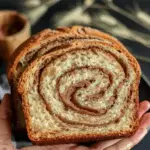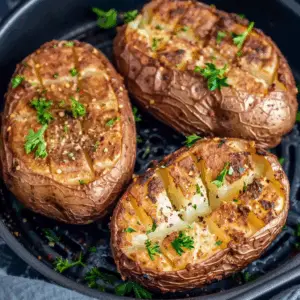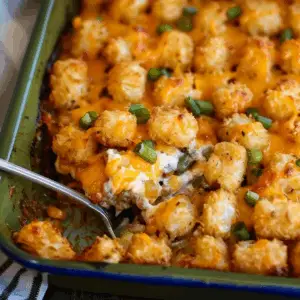Cinnamon Swirl Bread
Few baked goods bring the same cozy satisfaction as a slice of cinnamon swirl bread. Soft, tender, and infused with warming spices, this classic treat offers a perfect balance between a quick snack and a satisfying dessert. Whether enjoyed fresh out of the oven or lightly toasted with a pat of butter, it’s a versatile favorite for home bakers of all levels.
Unlike traditional yeasted versions, this quick cinnamon swirl bread relies on baking powder for lift, eliminating the need for proofing or kneading. It’s perfect for busy schedules or spontaneous cravings. The texture is moist and cake-like, yet holds enough structure to showcase a beautifully defined swirl. If you’ve ever struggled with dry loaves, collapsed centers, or swirls that disappear into the crumb, this method provides a no-fail solution.
This article covers everything from choosing the right all-purpose flour to nailing the perfect swirl. You’ll learn tips to prevent sinking layers, techniques to enhance tenderness, and how to add a flawless glaze. We’ll also address the most common troubleshooting issues and suggest custom variations to make the recipe your own. For example, understanding how ingredients like vanilla extract and cinnamon interact in baking can elevate both the flavor and consistency. For a deeper dive into what makes cinnamon a favorite spice in baking, check out this resource.
Not only will you get a step-by-step guide to baking, but you’ll also discover expert tips inspired by the most popular quick cinnamon swirl bread recipes, with practical advice for any home kitchen. By the end, you’ll be able to craft a loaf that’s both visually stunning and incredibly delicious—with less time and zero stress.
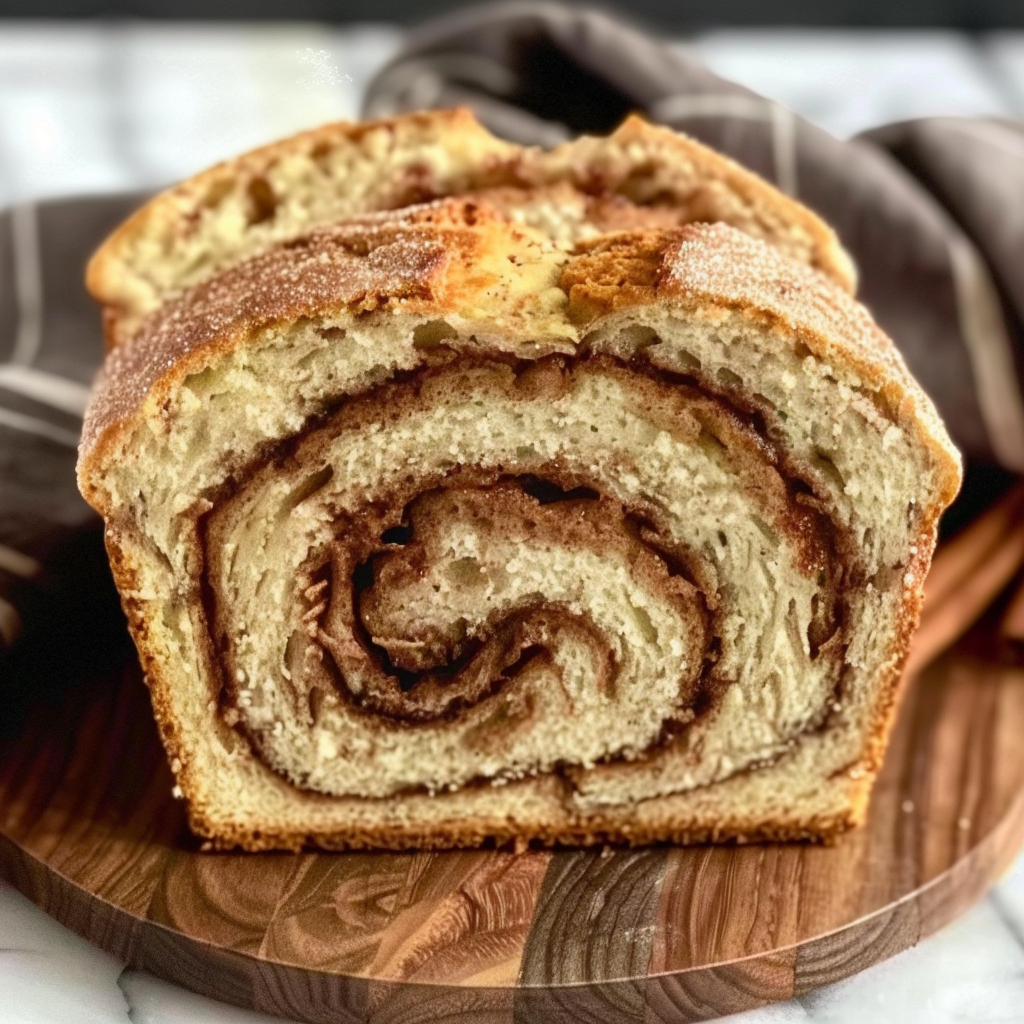
Quick Cinnamon Swirl Bread: What Makes It Different?
The quick cinnamon swirl bread stands apart from traditional yeasted loaves because it uses baking powder instead of yeast for leavening. This simple shift transforms the entire baking process, cutting down preparation time while keeping the loaf tender, moist, and full of flavor. Instead of waiting for dough to rise, you can mix, swirl, and bake within minutes. The result is a soft, golden loaf that still delivers that signature cinnamon sugar pattern and rich aroma.
Quick breads rely on the chemical reaction between baking powder and liquid ingredients to create rise and structure. This makes them ideal for beginner bakers or anyone seeking a no-fail cinnamon swirl bread that’s ready in under an hour. Using all-purpose flour ensures the crumb stays light without being overly delicate. For more insight into how flour affects texture, visit the Flour overview on Wikipedia.
The beauty of this streamlined method is that it protects the bread’s softness without requiring technical skills or special equipment. Compared to yeasted doughs, quick breads like this are less sensitive to temperature and humidity, offering dependable results every time. If you love experimenting, check out creative cinnamon sugar swirl ideas from this Pinterest guide for visually striking designs. Whether you’re baking for a weekend brunch or a weekday treat, this method gives you consistent, bakery-quality results in less time.
Essential Ingredients and Their Roles
Every ingredient in this quick cinnamon swirl bread recipe plays a specific role in achieving the ideal texture, flavor, and swirl definition. Understanding how these components interact helps prevent common issues like dryness, dense crumb, or sunken swirls.
Bread Batter
-
All-purpose flour: This provides the foundation of structure in the bread. It’s protein-rich enough to hold shape, yet versatile enough to remain tender. Using too much can lead to dryness, so it’s essential to measure properly. Learn more about how flour impacts baking by reviewing the Wikipedia page on flour.
-
Baking powder: Unlike yeast, baking powder provides immediate lift by reacting with moisture and heat. It creates a soft, cake-like texture typical of quick breads. A deep understanding of its behavior helps avoid collapsed centers. For chemical insight, read more here.
-
Granulated sugar: Besides adding sweetness, sugar helps with browning and moisture retention. It balances the strong spice of cinnamon and ensures a golden crust.
-
Salt: A small amount sharpens the flavor, balancing the sweetness and enhancing the vanilla and spice notes.
-
Milk: This adds moisture, activates the baking powder, and helps form a smooth batter. Whole milk is ideal, but dairy alternatives can work with slight textural differences.
-
Vegetable oil: Unlike butter, oil creates a softer and more tender crumb. It remains moist for days, making this bread perfect for baking ahead.
-
Egg: This binds the batter and contributes to the structure. It also aids in a golden, tender finish.
-
Vanilla extract: A flavor booster that pairs naturally with cinnamon and sugar. To understand how it’s made and why it’s so impactful in baking, see the Wikipedia article on vanilla extract.
Cinnamon Swirl
-
Cinnamon: The star of the show, this warm spice enhances both aroma and taste. Using high-quality ground cinnamon ensures depth and clarity of flavor. To learn more about its origin and uses, see Cinnamon on Wikipedia.
-
Granulated sugar: It sweetens the swirl and adds a crisp texture after baking. It also helps the cinnamon stay suspended within the batter layers.
Swirling technique is key here. A poorly mixed swirl can sink or create gaps in the bread. Check out visual examples and ideas in this Pinterest tutorial for how to swirl cinnamon properly to avoid uneven distribution.
Optional Glaze
-
Powdered sugar: This finely ground sugar forms the base of the glaze and dissolves easily into a smooth finish.
-
Milk: Adjusts consistency—from thick drizzle to light glaze—depending on how much you use.
-
Vanilla extract: Complements the sweet and spicy notes, rounding out the flavor.
This glaze is optional but adds visual appeal and an extra touch of sweetness. For more ideas on finishing touches, see this Pinterest collection of glaze ideas.
Together, these ingredients form a balanced recipe that is simple to prepare yet richly flavorful, ensuring consistent success whether you’re baking for a special occasion or just a cozy morning treat.
Step-by-Step Quick Cinnamon Swirl Bread Recipe
Making quick cinnamon swirl bread is a simple yet satisfying process when you follow each step with care. This streamlined method uses a single mixing bowl for wet and dry ingredients, making it a fast and convenient recipe for bakers of any skill level. The key is to mix the batter gently, layer the cinnamon sugar evenly, and swirl just enough to create visual definition without blending the layers. Here’s a complete step-by-step breakdown:
Step 1: Preheat and Prepare the Pan
-
Preheat your oven to 350°F (175°C). This temperature ensures even baking without overbrowning.
-
Grease a 9×5-inch loaf pan with oil or butter, or line it with parchment paper for easy removal. Proper pan prep is essential for preventing sticking.
Step 2: Mix the Dry Ingredients
-
In a medium mixing bowl, combine:
-
2 cups all-purpose flour
-
1 tablespoon baking powder
-
½ teaspoon salt
-
½ cup granulated sugar
-
-
Whisk gently to evenly distribute the leavening agent and prevent clumping. Understanding the ratio of dry ingredients helps prevent dense or uneven texture—something discussed in quick bread baking tips found here.
Step 3: Mix the Wet Ingredients
-
In a separate bowl, whisk together:
-
1 egg
-
1 cup milk
-
⅓ cup vegetable oil
-
1 teaspoon vanilla extract
-
-
Room-temperature ingredients blend better and help create a smoother batter. This also ensures more even baking and better rise.
Step 4: Combine Wet and Dry Mixtures
-
Pour the wet ingredients into the bowl with the dry mixture.
-
Stir until just combined. Do not overmix—a few lumps are fine. Overmixing leads to tough, dry bread due to gluten development.
-
The batter should be slightly thick but pourable.
Step 5: Prepare the Cinnamon Swirl
-
In a small bowl, mix:
-
⅓ cup granulated sugar
-
1 tablespoon ground cinnamon
-
-
Stir until evenly combined. For additional visual inspiration on cinnamon layering, review these swirl examples.
Step 6: Assemble the Layers
-
Pour half the batter into the prepared loaf pan.
-
Sprinkle half the cinnamon-sugar mixture evenly over the batter.
-
Add the remaining batter on top and smooth it with a spatula.
-
Top with the remaining cinnamon-sugar mixture.
Step 7: Swirl the Batter
-
Use a butter knife or skewer to gently swirl through the batter in a zigzag or spiral pattern. Avoid overmixing the swirl into the batter—this can blur the design and impact the loaf’s visual appeal.
-
For how to swirl cinnamon in bread with precision, view this helpful Pinterest guide.
Step 8: Bake
-
Bake for 45–50 minutes, or until a toothpick inserted into the center comes out clean.
-
Oven temperatures can vary, so begin checking at the 45-minute mark. An overbaked loaf can become dry quickly.
Step 9: Cool the Bread
-
Allow the bread to cool in the pan for 10 minutes.
-
Then, transfer to a wire rack to cool completely. Cooling helps set the structure and keeps the swirl from collapsing when slicing.
Step 10: Optional Glaze
-
Mix together:
-
½ cup powdered sugar
-
1–2 tablespoons milk
-
¼ teaspoon vanilla extract
-
-
Stir until smooth, adjusting the milk to reach your desired consistency.
-
Drizzle over cooled bread for a glossy, sweet finish. For more glaze ideas for quick breads, visit this Pinterest board.
This method ensures a consistently tender loaf with a defined cinnamon swirl, rich aroma, and golden finish—everything a homemade cinnamon bread should be.
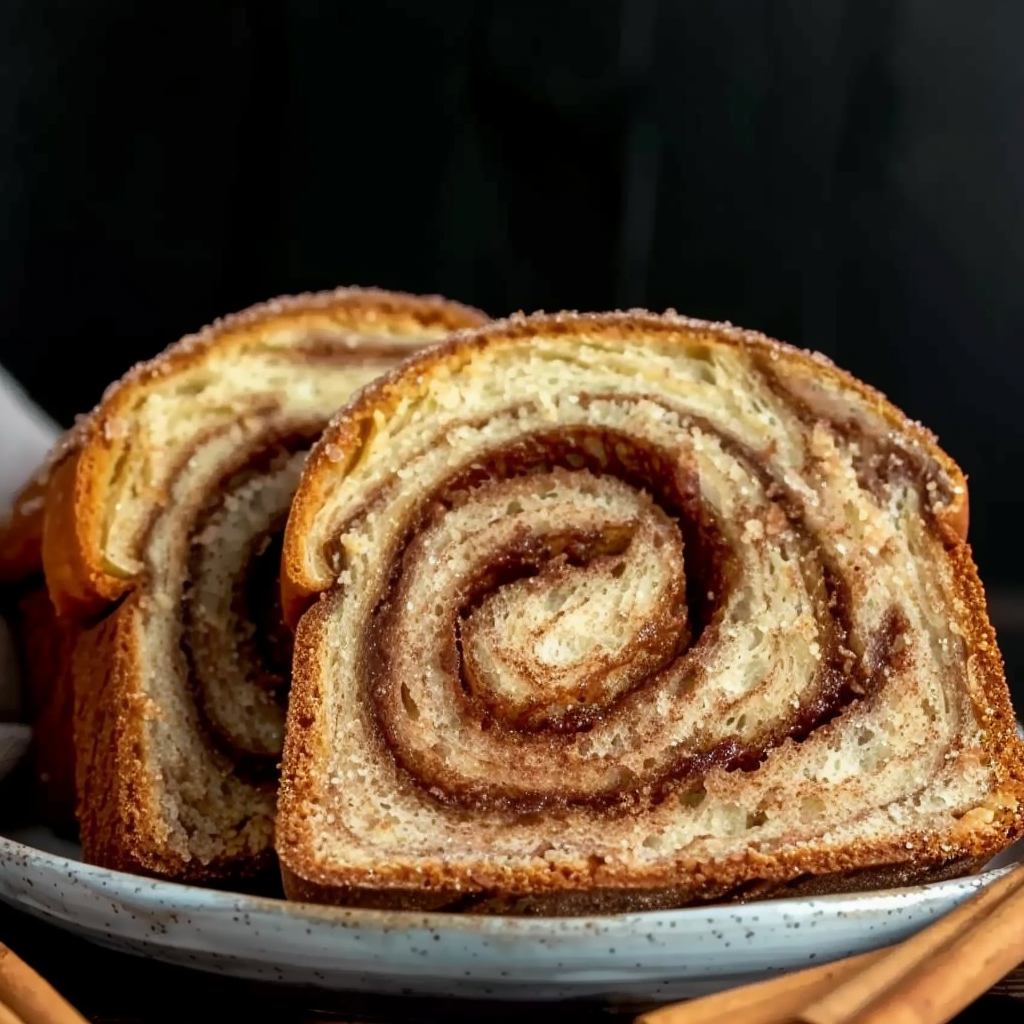
Cinnamon Swirl Layering: How to Get the Perfect Swirl
Achieving the perfect cinnamon swirl in your quick bread is part art, part technique. A well-executed swirl offers both flavor distribution and visual appeal—two key features that elevate the final result from simple to show-stopping. Here’s how to ensure your swirl turns out beautifully each time:
-
Use the right consistency: The cinnamon-sugar mixture should be dry but fine enough to layer smoothly. You can add a teaspoon of flour to the mix to help it stay suspended in the batter and avoid sinking.
-
Layer with precision: Pour half the batter into the pan, sprinkle the swirl mixture evenly, then repeat. Don’t dump it all in one spot—spread it edge to edge for full coverage and even flavor.
-
Control your swirl pattern: Use a thin knife or skewer to drag a gentle zigzag or spiral through the batter. Aim for 3–4 passes only. Overdoing it can blend the layers and create muddy, indistinct lines.
-
Keep it shallow: Avoid pushing your swirling tool too deep, which can drag the cinnamon to the bottom. Stay within the top 2/3 of the batter to ensure an even swirl throughout.
For inspiration, explore different swirling techniques that show how subtle changes can result in dramatically different looks.
A defined swirl not only looks great but also ensures balanced flavor in every slice. Once you’ve mastered the method, you’ll want to apply it to all kinds of quick breads.
Common Mistakes and How to Fix Them
Even a simple cinnamon swirl bread recipe can run into issues if techniques are off. Fortunately, most problems are easily fixable with a few key adjustments:
-
Swirl sinks to the bottom: This often happens when the cinnamon-sugar mixture is too heavy or the batter is too thin. Add a teaspoon of flour to the swirl mixture to help it stay suspended.
-
Dry texture: Usually caused by overmixing or overbaking. Stir batter only until just combined, and start checking doneness at the 45-minute mark. Use oil instead of butter for a more tender result, as explained in baking tips for moist quick breads here.
-
Collapsed center: Often due to underbaking or old leavening agents. Always test with a toothpick and check the freshness of your baking powder.
-
Uneven swirl: Caused by overmixing the swirl or using too aggressive a swirling motion. Swirl lightly and avoid deep movements with your knife.
-
Sticky loaf or hard removal: Line your loaf pan with parchment paper or ensure it’s well-greased. This helps preserve both the look and the texture of your loaf.
Recognizing and fixing these common issues ensures a consistent baking experience every time.
Customizing the Cinnamon Swirl Bread (Optional Add-ins)
This base recipe is a blank canvas for creativity. By adding mix-ins or tweaks, you can create your own signature version of quick cinnamon swirl bread:
-
Add fruits: Toss in ½ cup of raisins, dried cranberries, or finely chopped apples for added sweetness and texture.
-
Incorporate nuts: Walnuts or pecans (chopped) add crunch and pair beautifully with cinnamon. Fold them into the batter or sprinkle on top before baking.
-
Use a streusel topping: Combine butter, sugar, cinnamon, and flour to create a crunchy top layer—great for brunch presentations.
-
Go dairy-free or vegan: Use plant-based milk (like almond or oat), and replace the egg with flaxseed meal (1 tbsp flax + 3 tbsp water = 1 egg). Oil already keeps the loaf moist without dairy.
-
Experiment with glaze flavors: Add a touch of maple syrup or espresso to your glaze for extra depth. More glaze inspirations are available here.
These customizations not only enhance flavor but also make the loaf more suitable for holidays, brunches, or gifting.
Expert Tips for Tender, Evenly Swirled Cinnamon Bread
To take your baking to the next level, follow these expert tips that ensure reliable results:
-
Avoid overmixing the batter: This is the number one cause of dense bread. Stir until ingredients are just incorporated.
-
Use fresh leavening agents: Baking powder loses potency over time. Replace every 6 months for best results.
-
Swirl smart: Swirl gently and minimally. Over-swirling breaks up the contrast between batter and filling.
-
Grease the pan thoroughly: Or better yet, use parchment paper to ensure easy release and keep the swirl intact.
-
Let it cool completely: Cutting too early can cause the swirl to smear. Wait until fully cooled for clean slices.
Applying these small techniques consistently leads to big improvements in the final loaf’s taste and appearance.
Texture Fixes: How to Keep Your Bread Moist and Fluffy
Texture makes or breaks a good cinnamon bread. Here’s how to keep yours moist and soft every time:
-
Measure flour accurately: Spoon it into the measuring cup, then level off. Scooping directly from the bag can add too much, leading to dryness.
-
Use oil instead of butter: Oil provides more moisture and a softer crumb, especially after the bread cools.
-
Incorporate the right liquid: Milk adds moisture, but using buttermilk can add tang and a more tender texture.
-
Don’t overbake: Even five extra minutes can dry out a quick bread. Start checking early and use a toothpick to test.
For more ideas on maintaining texture, explore helpful baking guides that focus on tender, flavorful results.
Swirl Issues: Preventing Gaps, Sinking, or Overmixing
The swirl is the centerpiece of this bread, and when it fails, the loaf suffers both visually and in taste. Here’s how to fix or avoid common swirl issues:
-
Prevent gaps: Gaps occur when the swirl mixture is too dense or not layered properly. Use a thin, even coating and avoid dumping it all in one place.
-
Avoid sinking: Add a teaspoon of flour to the swirl mixture. This gives it some structure and helps it stay suspended in the batter.
-
Minimize overmixing: Once you swirl with a knife, stop. Don’t stir or blend the batter again. Overmixing causes the swirl to disappear and may toughen the crumb.
Looking for swirl inspiration? This Pinterest resource offers visuals and tips to perfect your technique.
How to Store and Reheat Cinnamon Swirl Bread
Storing your cinnamon swirl bread properly keeps it fresh, moist, and flavorful:
-
At room temperature: Store in an airtight container or wrap in foil for up to 3–4 days. Add a paper towel inside to absorb moisture and prevent sogginess.
-
Avoid refrigeration: The fridge tends to dry out baked goods. Only refrigerate if using dairy-based fillings or frostings.
-
To freeze: Slice the cooled loaf, then wrap slices individually in plastic wrap and store in a freezer bag. Keeps well for up to 2 months.
-
To reheat: Warm slices in the microwave for 10–15 seconds or toast lightly in the oven. This revives the softness and enhances the cinnamon aroma.
For detailed freezing and reheating practices, explore tips from quick bread storage experts featured here.
Serving Suggestions & Pairings
Quick cinnamon swirl bread is incredibly versatile. Here are some favorite ways to serve it:
-
At breakfast: Serve warm with butter, jam, or cream cheese. Add a cup of coffee for the perfect morning pairing.
-
As a snack: A slice with tea in the afternoon makes a comforting pick-me-up.
-
For dessert: Add whipped cream or a scoop of vanilla ice cream for a simple dessert option.
-
For brunch: Cut into cubes and serve as part of a breakfast platter or turn into French toast.
Pair it with warm drinks like chai, hot chocolate, or apple cider for an extra cozy experience.
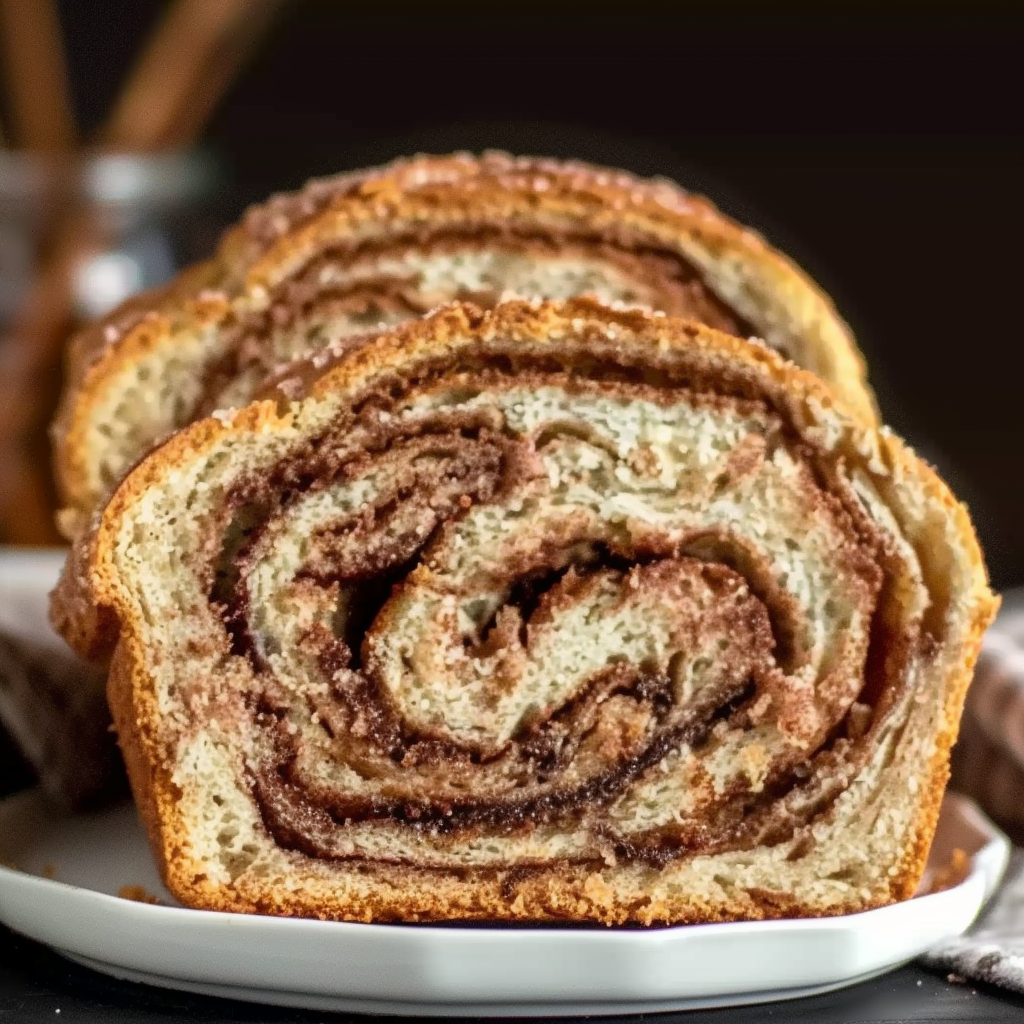
FAQs: Quick Cinnamon Swirl Bread
Why did my cinnamon swirl sink to the bottom?
The swirl may have been too heavy or the batter too thin. Add a teaspoon of flour to the cinnamon-sugar mix to prevent sinking.
Can I make cinnamon swirl bread without eggs?
Yes. Use a flax egg (1 tbsp ground flax + 3 tbsp water) or a commercial egg replacer. The bread will still be moist and rise well.
What’s the best way to get a defined swirl in bread?
Layer the swirl evenly and use a gentle zigzag motion with a knife. Avoid deep swirling to keep the cinnamon near the center and top.
Can I use whole wheat flour in this recipe?
Yes, but it will be denser. Try using half whole wheat and half all-purpose flour for balance.
How do I prevent dry quick bread?
Use oil instead of butter, measure flour carefully, and avoid overbaking. Cover the loaf after it cools to retain moisture.
Can I double the recipe for two loaves?
Yes, simply double all ingredients and divide evenly between two pans. Bake both loaves side by side and rotate midway through for even baking.
Is this bread freezer friendly?
Absolutely. Slice, wrap tightly, and store in the freezer. Reheat slices in the microwave or toaster oven for best results.
The Best Cinnamon Swirl Bread Tips Techniques And Fixes For Swirled Bread
This Quick Cinnamon Swirl Bread is a no-fail, tender loaf filled with ribbons of warm cinnamon sugar and topped with an optional vanilla glaze. Made without yeast, it’s a perfect quick bread recipe for busy mornings, cozy afternoons, or last-minute baking needs. Moist, flavorful, and easy to customize, this loaf delivers bakery-level results with minimal effort and maximum reward.
- Author: Clara
Ingredients
For the bread:
- 2 cups all-purpose flour
- 1 tbsp baking powder
- 1/2 tsp salt
- 1/2 cup granulated sugar
- 1 egg
- 1 cup milk
- 1/3 cup vegetable oil
- 1 tsp vanilla extract
For the cinnamon swirl:
- 1/3 cup granulated sugar
- 1 tbsp ground cinnamon
For the glaze (optional):
- 1/2 cup powdered sugar
- 1–2 tbsp milk
- 1/4 tsp vanilla extract
Instructions
- Preheat oven to 350°F (175°C) and grease a 9×5-inch loaf pan.
- In a medium bowl, whisk together flour, baking powder, salt, and sugar.
- In another bowl, whisk together egg, milk, oil, and vanilla extract.
- Pour the wet ingredients into the dry ingredients and stir until just combined. Do not overmix.
- In a small bowl, mix the cinnamon and sugar for the swirl.
- Pour half of the batter into the loaf pan. Sprinkle half of the cinnamon-sugar mixture over the batter.
- Add the remaining batter on top, then sprinkle the rest of the cinnamon-sugar mixture over it.
- Use a knife to gently swirl the cinnamon mixture through the batter.
- Bake for 45–50 minutes or until a toothpick inserted in the center comes out clean.
- Let the bread cool in the pan for 10 minutes, then remove to a wire rack to cool completely.
- For the glaze, mix powdered sugar, milk, and vanilla until smooth, then drizzle over the cooled bread if using.
Notes
-
Always swirl lightly—deep swirling can push the cinnamon mixture to the bottom.
-
For a dairy-free version, use almond or oat milk and skip the glaze or use a plant-based powdered sugar alternative.
-
Wrap cooled bread tightly in foil or plastic wrap to maintain freshness for several days.
-
Toast leftover slices and top with cream cheese for a quick breakfast.
-
Experiment with different spices like nutmeg or cardamom for a seasonal twist.

